DRAM RAPL Validation
Intel provides RAPL to provide estimated (and on some systems, actual) power
measurements that the user can access.
But how good are these measurements really?
We set out to instrument some machines to find out.
We looked primarily at the DRAM RAPL readings but also report a bit on
the RAPL CPU and RAPL GPU measurements.
The papers
- MEMSYS 2016, October 2016
- RAPL validation on various DDR3 and DDR4
DIMMS on Haswell and Haswell-EP.
- The ACM would like you to download the paper from
their server (it's not there yet)
- A copy for personal use can be found here:
2016_memsys_rapl.pdf (13M)
- See the slides from my
Award Winning Presentation
- Tech report, November 2015
Some pictures
The instrumented Haswell-EP machine:
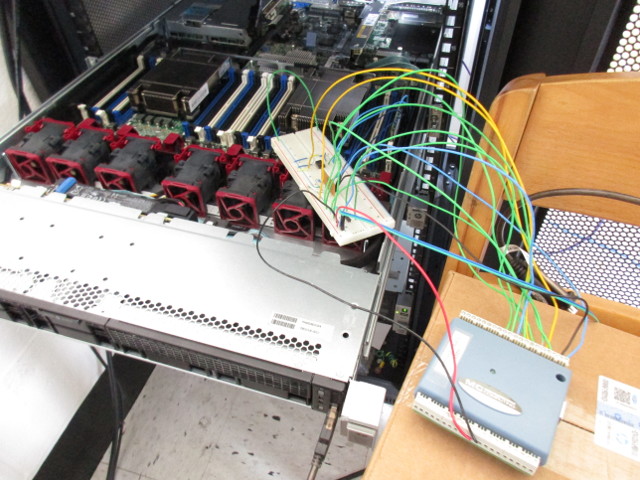
Some plots
Scatter plots inspired by similar ones from Thomas Ilsche.
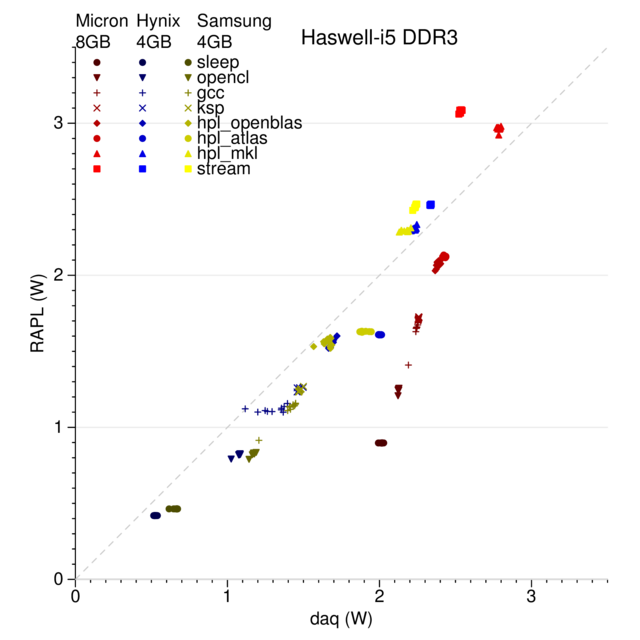
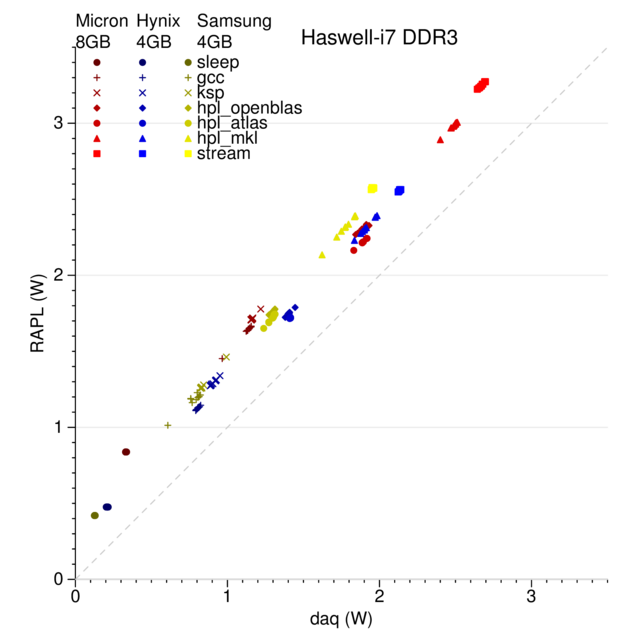
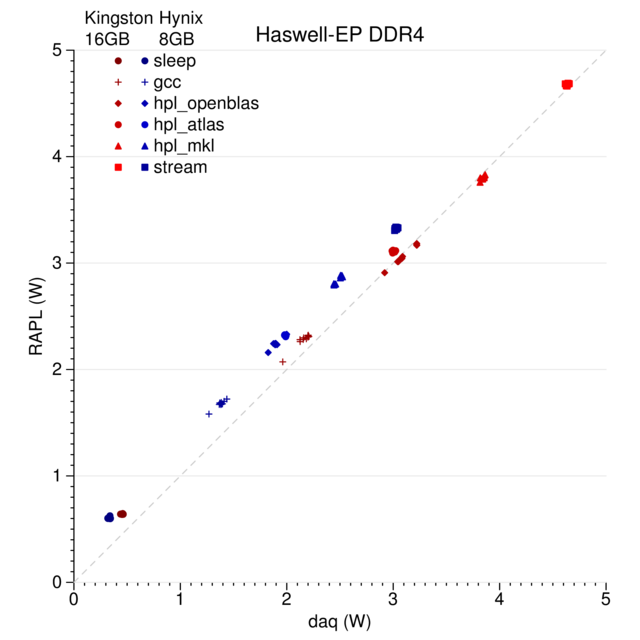
Haswell-i5/DDR3 phase plot showing perf, CPU, and DRAM RAPL results:
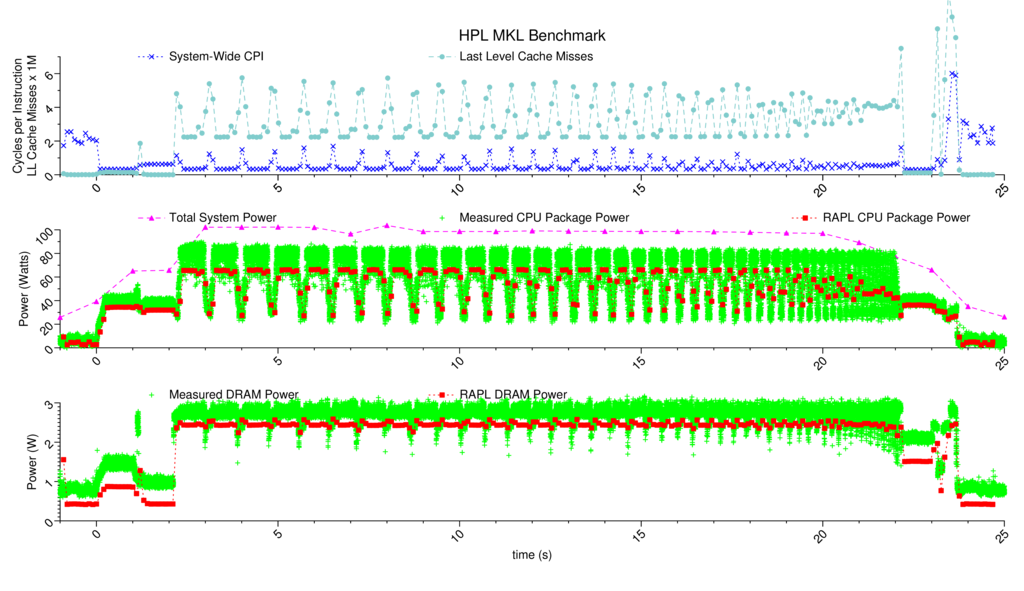
Haswell-EP/DDR4 phase plot results showing DDR RAPL and actual power measurements:


Summary
The summary for RAPL DRAM validation:
- On Haswell desktop machines the overall pattern is good,
but it the result is offset in a way that varies between systems.
- The estimate is worse on idle systems and is better on busy systems.
- The integrated graphics use the DRAM and RAPL
doesn't always seem to account for this.
- The Haswell-i5, the Intel MKL version of HPL (Linpack) does
better than any of the other benchmarks on RAPL DRAM,
possibly it was
one of the original training benchmarks.
- Haswell-EP using "Mode 1" RAPL is actually measuring power
(due to onboard voltage regulator)
so results are much better.
Raw Data
You can get our code and all of our raw data here:
git clone https://github.com/deater/rapl_validation
Back to my main RAPL related pages






